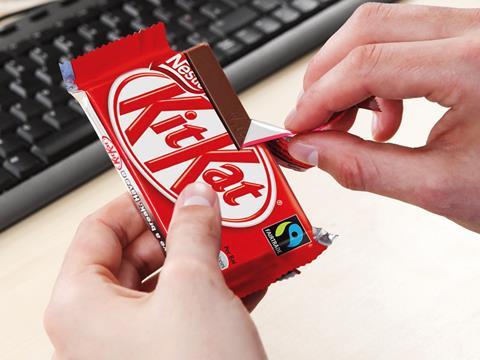
Controversy abounds! McDonald’s has withdrawn its latest ad after it was attacked for exploiting child bereavement. I’ve seen the shocking ad and it’s disgraceful. A young boy, already sad because his dad has died, orders a Filet-o-Fish, which everyone knows is the quickest shortcut to overwhelming grief and remorse there is. To expose young children to this level of fish-based depression is irresponsible. McDonald’s should get back to selling kids chicken nuggets instead.
Meanwhile, the incredibly important row between Nestlé and Cadbury intensified this week after Nestlé lost yet another court battle in its attempt to trademark the shape of the Kit Kat, which is the best chocolate bar on the market, other than the Kit Kat Chunky, or peanut butter M&M’s (which are outrageous).
Why would anyone object to Nestlé trying to trademark the shape of a Kit Kat? It’s a good question, because really, what possible reason could anyone have? The answer, it emerges, is revenge.
Not since the days of Arthur Slugworth has corporate-confectionery-copycatting been quite this high on the news agenda. The story began a decade or so ago, when Nestlé successfully blocked Cadbury’s attempt to trademark the specific colour of purple it uses for Dairy Milk (it’s called Pantone 2685C, if you’re interested). In turn, Cadbury has now blocked Nestlé’s plan to trademark its four-fingered bar.
Here’s what a grown-up spokesman for Cadbury owner Mondelez said after today’s ruling was announced: “We are pleased with the court of appeal’s decision today and welcome their conclusion. As we have previously stated, we do not believe the shape of the Kit Kat bar should be protected as a trademark in the UK.”
Thank goodness they stepped in. But you’re quite right, it does echo the smug Nestlé spokesman in 2016 who announced how “pleased” Nestlé was that Cadbury had been denied the registration of Pantone 2685C, doesn’t it?
Perhaps both parties are completely unaware of how this sort of thing appears to anyone outside of their chocolatey towers. What may have started out as corporate mischief-making will be costing them a fortune in legal fees, which must bemuse and frustrate investors.
Both Nestlé and Cadbury should be focusing on their own recipes, margins, innovations and operations rather than trying to sabotage each other by arguing over colours and shapes like toddlers at nursery school. Does anyone actually care about this situation other than the egos in both boardrooms and the lawyers chalking up yet more billable hours?
The lawyers, of course, will be grimly advising their clients of the risk of their opponent gaining a competitive advantage of some sort should they allow these trademarks to go through, as if they aren’t talking about shapes or colours, but chocolate itself. Ah, lawyers.
If we do stoop down and take it seriously, does Cadbury really believe launching an identikit-Kit Kat would reverse its ailing performance? Does Nestlé actually plan to copy a Dairy Milk in the classic purple to boost its own fortunes? If they did, some people would buy them, some brand loyalists would actively reject them, the resulting sales would cancel each other out, and a social media fail somewhere along the line would be guaranteed.
It’s certainly one for Stefano Agostini, who will assume control of Nestlé UK on 1 July, to ponder. After today’s judgment, Nestlé is reportedly considering taking the case to the Supreme Court. Cadbury will no doubt be waiting for it. But given the struggles both Nestlé and Cadbury are enduring right now, maybe it’s time for both of them to take a break, get back to what they do best, and invent some new chocolate bars.







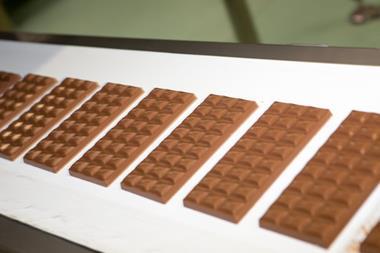

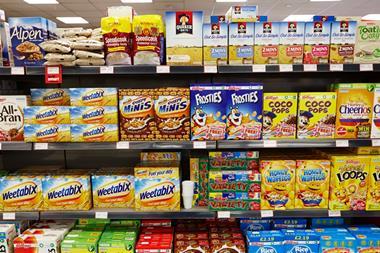
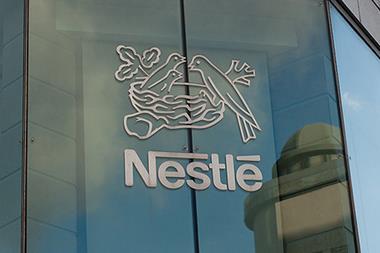
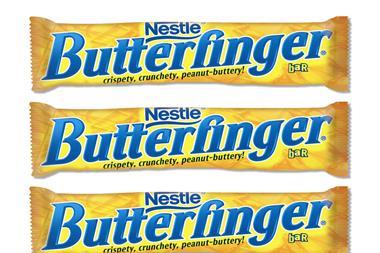







No comments yet